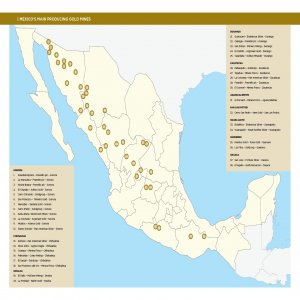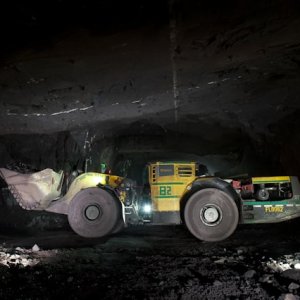Chemical Innovation Predicts Sustainable Mining Future

STORY INLINE POST
Mexico has seen an average annual growth of 7% in its demand for chemicals over the last 15 years. Industries such as automotive, agriculture, and mining are consuming larger quantities of these chemicals than ever as the Mexican market continues to grow. This means that the potential for environmental damage from chemicals presents a distinct challenge for any company looking to improve the reputation of its chemical consumption. BASF is the world’s leading chemical company, with more than 112,000 employees and 376 production sites worldwide. Its corporate purpose of “creating chemistry for a sustainable future” puts BASF in one of the best positions to dissolve the stigma attached to industrial chemical usage, and to change the negative perspective that entails. Michael Stumpp, President of BASF Group for Mexico, Central America, and the Caribbean, explains some of the challenges the Mexican mining industry faces and how using the right chemicals can help overcome them. “The industry offers extensive employment opportunities, it is an important contributor to the country’s GDP, and it involves high capital investments. However, it does not necessarily have a grip on its public perception,” he explains. “To improve this impression, mining companies need to become increasingly environmentally friendly, which can only be achieved by using the right chemicals.”
Twenty years ago, the mining industry demanded a different range of chemicals than it does today, but some of the environmental challenges remain the same. Over time, this demanding aspect of mining has changed how companies approach their use of chemicals. According to Stumpp, new mines that are being constructed in Mexico are presenting a good opportunity for BASF to showcase its environmentally friendly products. “New mines facilitate the introduction of state-of-the-art technology, which has benefited our business in the Mexican mining industry, more so than in other countries with older mines,” he explains. “Even so, the challenges that the industry faces are the same all over the world. Profitable deposits are become rarer and are being increasingly found in remote places with water scarcity. In addition, mining companies are being forced to reduce their environmental impact, which is a challenge that we are capable of alleviating. Our products help to increase yields by improving separation and flocculation of valuable minerals. We have an extensive portfolio for solid-liquid separation and flotation agents to make operations more economically viable, safer, and, most importantly, more environmentally friendly.”
BASF’s products are used to remove unwanted surface active components from copper and nickel leachates, and also for solvent extraction processes, which are widely used in Mexico. One of the biggest product lines that the company offers in Mexico is the Lix product line, also used for the purification of copper and nickel leachates. Lix is one of the product lines obtained from Cognis, one of BASF’s recent acquisitions. The company also offers Rheomax DR for enhancing thickener performance and Rheomax ETD, which allows companies to better manage their tailings. “Our products are used throughout the entire life cycle of a mine, from exploration, construction, and extraction, to processing. The mining industry needs chemical suppliers to maximize the output of their processes,” states Stumpp. A chemical supplier cannot provide generic solutions because the mineralization, ore type, and water availability differs in every mine. Chemical companies therefore need to adjust their solutions according to the needs and conditions of each mine. “BASF is specialized in chemical innovation and technical services, and we also have additives for the concrete and polyurethane used in construction and tunneling,” explains Stumpp.
To reduce the gap in operational efficiency, Stumpp believes that chemical companies need to work with their clients, universities, and with OEMs to discover the most effective solutions. BASF spends roughly US$2 billion on R&D every year and has 10,000 employees dedicated to this cause worldwide. Unlike other chemical companies, BASF spends 25% of its R&D budget on basic research, which may not initially have operational applications and is typically carried out by universities. For the mining industry, the company applies innovations that were not initially developed for mining, such as surface treatment and flotation chemicals. The ability to transfer technology from one industry to another is one of the company’s primary advantages. BASF works with other sectors, such as the detergent industry, to provide better solutions through the use of enzymes and biochemicals. The use of such solutions will likely become more widespread in the mining industry as BASF’s efforts increase. In this regard, the company has invested a lot of money in increasing its expertise and presence in the enzymes market, which create more environmentally friendly and sustainable solutions.






















